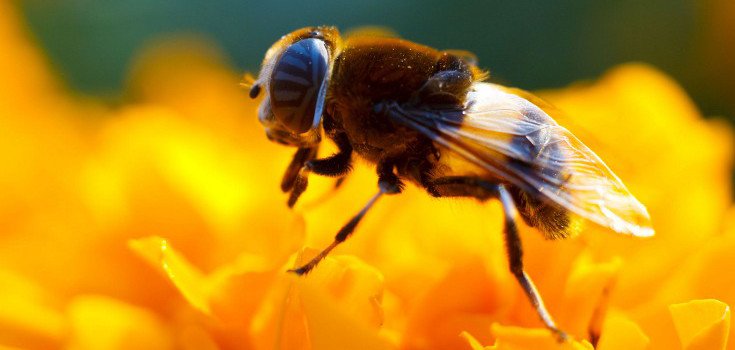Harvard Finds Pesticide in 70% of Honey Samples Tested

The Colony Collapse Disorder (CCD) issue you keep hearing about (the phenomenon that is killing our bees and butterflies), well it just got real again with a study from Harvard. The study shows that 70% of honey samples collected in Massachusetts contain at least one neonicotinoid, the pesticide class that biotech companies say have nothing to do with the bee die offs we are seeing around the world.
The new study from the Harvard T.H. Chan School of Public Health appears in the Journal of Environmental Chemistry. Chensheng (Alex) Lu, associate professor of environmental exposure biology in the Department of Environmental Health at Harvard Chan School and lead author of the study, states:
“Data from this study clearly demonstrated the ubiquity of neonicotinoids in pollen and honey samples that bees are exposed to during the seasons when they are actively foraging across Massachusetts. Levels of neonicotinoids that we found in this study fall into ranges that could lead to detrimental health effects in bees, including CCD.”
Scientists, policymakers, farmers, and beekeepers have been alarmed at the rates in which bees and other pollinators are dying, leaving approximately a third of crops in a fragile position worldwide since they depend on pollination to produce.
Though other studies have shown neonic residues in honey and pollen samples collected at one point in time, this particular study shows how pervasive the problem has become. Researchers took samples over summer and spring months, when bees are normally foraging, from the same set of hives around Massachusetts.
Read: Obama Urged to Suspend Bee-Killing Pesticides
They determined that variable levels of 8 neonicotinoids were present by working with 62 Massachusetts beekeepers who volunteered to collect monthly samples of pollen and honey from foraging bees. This was done by using pollen traps on the landings of beehives. The beekeepers then sent the samples to the researchers.
The researchers analyzed 219 pollen and 53 honey samples from 62 hives, from 10 out of 14 counties. They found neonicotinoids in pollen and honey from almost every sample collected, in each and every location — suggesting that bees are at risk of neonicotinoid exposure any time they are foraging anywhere in the state. This is likely the outcome of CCD due to pesticide exposure in other areas as well.
The most commonly-detected neonicotinoid was imidacloprid, followed by dinotefuran. Particularly high concentrations of neonicotinoids were found in Worcester County in April, in Hampshire County in May, in Suffolk County in July, and in Essex County in June, suggesting that, in these counties, certain months pose real risks to bees.
Lu pointed out:
“The data presented in this study should serve as a basis for public policy that aims to reduce neonicotinoid exposure.”

That’s why we all would do better by any means possible getting off the unnatural system. I’m thinking about raising bees here for honey, and help pollinate our local gardens If the bees die off, then we too will follow.
The globalist,have lost their minds.
Here in North Central Florida, we are discovering that the Bee’s have no honey for the winter. There are many bee keepers that have gone out to rob/harvest the honey and there is none. My dad is one of them. What has happened? Why no honey? We will have to feed them through the winter or else they will die. Anyone have any answers?